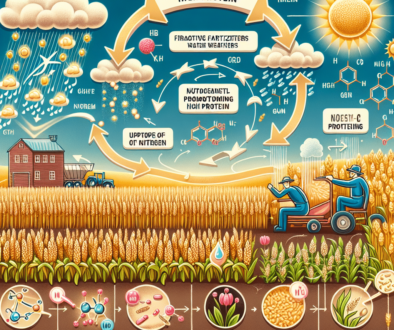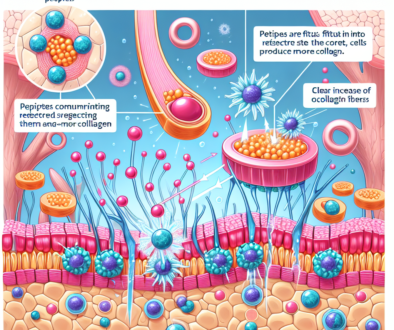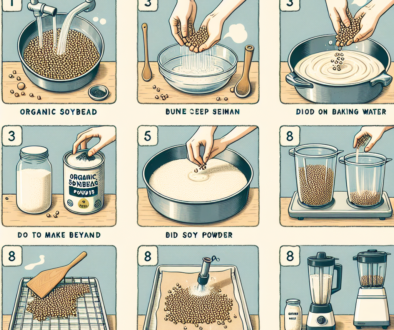What Has More Protein Bread Or Rice?
-
Table of Contents
- Protein Content in Bread vs. Rice: A Comprehensive Analysis
- Understanding Protein in Our Diet
- Protein in Bread: Types and Content
- Protein in Rice: White vs. Brown
- Comparing Protein: Bread vs. Rice
- Factors Affecting Protein Quality and Absorption
- Conclusion: Making the Right Choice for Your Diet
- Enhance Your Protein Intake with ETprotein Products
Protein Content in Bread vs. Rice: A Comprehensive Analysis

When it comes to dietary choices, understanding the nutritional value of the foods we consume is crucial for maintaining a balanced diet. Protein, being one of the essential macronutrients, plays a significant role in building and repairing tissues, making enzymes and hormones, and supporting overall health. Two staple foods that are commonly found in diets worldwide are bread and rice. This article delves into the protein content of these two foods, comparing them to help you make informed dietary decisions.
Understanding Protein in Our Diet
Before we compare the protein content in bread and rice, it’s important to understand why protein is vital for our health. Proteins are made up of amino acids, which are the building blocks of our body’s cells. They are necessary for the growth and maintenance of all our body tissues, including muscles, skin, organs, and blood. A diet lacking in adequate protein can lead to muscle wasting, weakened immunity, and other health issues.
Protein in Bread: Types and Content
Bread comes in various forms, each with a different nutritional profile. The protein content in bread can vary based on the type of grain used, the method of preparation, and any additional ingredients. Here are some common types of bread and their approximate protein content per slice:
- White bread: 2 grams
- Whole wheat bread: 3 grams
- Multi-grain bread: 4 grams
- Sourdough bread: 3 grams
- Rye bread: 2.5 grams
Whole grain breads generally contain more protein than white breads because they include the entire grain kernel, which is rich in protein. Additionally, breads that contain seeds and nuts will have a higher protein content.
Protein in Rice: White vs. Brown
Rice is another staple food that is consumed in large quantities around the world. Similar to bread, the protein content in rice can vary depending on the type. Here’s a look at the protein content in a 100-gram serving of cooked rice:
- White rice: 2.7 grams
- Brown rice: 2.6 grams
While the difference in protein content between white and brown rice is minimal, brown rice is often considered the healthier option due to its higher fiber content and nutritional value, including vitamins and minerals.
Comparing Protein: Bread vs. Rice
When directly comparing the protein content of bread and rice, it’s important to consider the serving sizes and the density of each food. Bread is typically more calorie-dense than rice, meaning that for the same weight, bread will often have more protein. However, when comparing standard serving sizes, such as one slice of bread to one cup of cooked rice, the protein content can be quite similar.
For example, one cup of cooked white rice (about 158 grams) contains approximately 4.3 grams of protein, which is comparable to two slices of white bread. However, if you opt for whole grain bread or rice, you’ll benefit from a slightly higher protein content along with additional nutrients.
Factors Affecting Protein Quality and Absorption
It’s not just about the quantity of protein but also the quality. Proteins are evaluated based on their amino acid composition and digestibility. Animal proteins are considered “complete” proteins because they contain all essential amino acids in the right proportions. Plant-based proteins, like those found in bread and rice, are often “incomplete” proteins as they may lack one or more essential amino acids.
However, by consuming a variety of plant-based proteins throughout the day, you can ensure that you’re getting all the essential amino acids your body needs. For instance, combining rice with beans or bread with peanut butter can create a complete protein profile.
Conclusion: Making the Right Choice for Your Diet
In conclusion, both bread and rice can contribute to your daily protein intake, but they should not be your primary protein sources. Whole grain options are generally better choices due to their higher protein content and additional nutrients. It’s also important to consider the overall balance of your diet, including a variety of protein sources to ensure you’re getting all essential amino acids.
When choosing between bread and rice, consider your dietary needs, preferences, and the other foods you’ll be consuming alongside them. For those looking to increase their protein intake, other sources such as lean meats, dairy products, legumes, nuts, and seeds might be more suitable.
Enhance Your Protein Intake with ETprotein Products
If you’re looking to supplement your diet with high-quality protein, ETprotein offers a range of organic and vegan protein products that can help. Their selection includes organic rice protein, pea protein, and various seed proteins, all characterized by a neutral taste and non-GMO, allergen-free attributes. With L-(+)-Ergothioneine purity over 98%, ETprotein’s products cater to a diverse range of industries and dietary needs.
Whether you’re involved in sports nutrition, weight management, or simply looking to improve your overall health and wellness, ETprotein’s products provide comprehensive solutions to meet your protein requirements. By incorporating these high-quality protein supplements into your diet, you can ensure that you’re supporting your body’s needs effectively.
About ETprotein:
ETprotein, a reputable protein and L-(+)-Ergothioneine (EGT) Chinese factory manufacturer and supplier, is renowned for producing, stocking, exporting, and delivering the highest quality organic bulk vegan proteins and L-(+)-Ergothioneine. They include Organic rice protein, clear rice protein, pea protein, clear pea protein, watermelon seed protein, pumpkin seed protein, sunflower seed protein, mung bean protein, peanut protein, and L-(+)-Ergothioneine EGT Pharmaceutical grade, L-(+)-Ergothioneine EGT food grade, L-(+)-Ergothioneine EGT cosmetic grade, L-(+)-Ergothioneine EGT reference grade and L-(+)-Ergothioneine EGT standard. Their offerings, characterized by a neutral taste, non-GMO, allergen-free attributes, with L-(+)-Ergothioneine purity over 98%, 99%, cater to a diverse range of industries. They serve nutraceutical, pharmaceutical, cosmeceutical, veterinary, as well as food and beverage finished product distributors, traders, and manufacturers across Europe, USA, Canada, Australia, Thailand, Japan, Korea, Brazil, and Chile, among others.
ETprotein specialization includes exporting and delivering tailor-made protein powder and finished nutritional supplements. Their extensive product range covers sectors like Food and Beverage, Sports Nutrition, Weight Management, Dietary Supplements, Health and Wellness Products, and Infant Formula, ensuring comprehensive solutions to meet all your protein needs.
As a trusted company by leading global food and beverage brands and Fortune 500 companies, ETprotein reinforces China’s reputation in the global arena. For more information or to sample their products, please contact them and email sales(at)ETprotein.com today.














